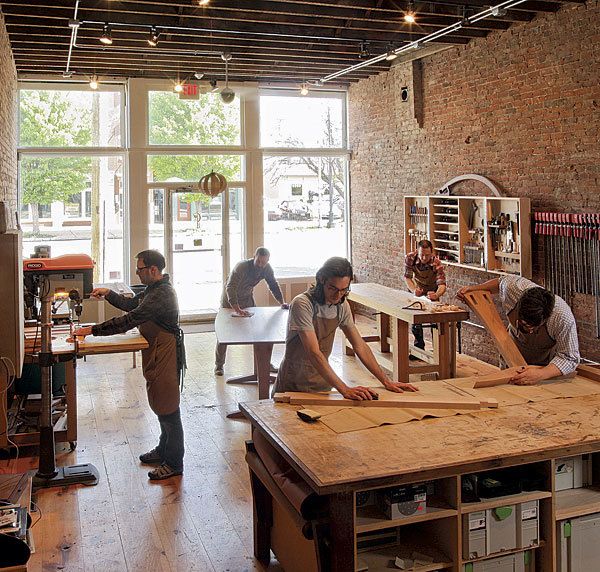Dreaming of Going Pro?
Five recipes for success in a difficult business
Synopsis: Ever wondered if you could make a living at woodworking? Even for the most talented furniture makers, it’s a struggle. And in the wake of the economic meltdown of 2008, which seemed to target furniture makers with special force, the struggle got harder. Those who try the rough waters and succeed seem to arrive at designs for their businesses that are as various as their styles of furniture. One thing that unites them is a willingness to work at the business as hard as they do at the bench. Jonathan Binzen takes a look at a handful of woodworkers who have managed to go pro. Included are interviews with Tom Throop, Geoffrey Warner, Jeff Miller, the team of Dan Chaffin and Matt Frederick, and Don Green.
Once you’ve taken a few sweet shavings with a well-tuned plane, cut a few tight-fitting dovetails, and built a few sturdy cabinets or cradles admired by friends and family, it’s probably inevitable that the thought occurs: could I make a living doing this? the answer is, probably not—at least, not the kind of living you’re used to. the math is despairingly simple. Building extremely labor-intensive objects in an era of extremely high labor costs results in prohibitive prices.
It’s been evident since the craft’s revival started some 50 years ago that even for the most talented furniture makers, it’s a struggle to make a living. And in the wake of the economic meltdown of 2008, which seemed to target furniture makers with special force, an already bleak picture got even grimmer.
And yet… the desire for fulfillment in one’s work, the passion and the pleasure to be found in working wood continue to prove irresistible to some, overcoming coldeyed assessments of profit and loss. Those who try the rough waters and succeed seem to arrive at designs for their businesses that are as various as their styles of furniture. One thing that unites them is a willingness to work at the business as hard as they do at the bench. I’ve collected a handful of exemplary ones here. Best of luck!
Tom Throop
The Local Craftsman
When Tom Throop was looking for a furniture-making school in the late 1980s, the Connecticut native chose John Makepeace’s Parnham College in Dorset, England, because the program was geared toward making a successful business as well as beautiful furniture. “I got into this to make a life—and to make a living,” Throop says. “The two things go hand in hand.”
These days, Throop works in a one-man shop tucked just off the bustling downtown shopping streets of New Canaan, Conn. Early in his career, Throop shared shops with other furniture makers in out-ofthe-way industrial buildings. He enjoyed the camaraderie with fellow craftsmen, but felt cut off from customers. So when he decided to set up a solo shop, he bought a building right in the heart of New Canaan, where he’d be visible and accessible to potential clients. “I plunked myself down into a population that can afford my work,” he says. “It’s been a 20-year evolution for me,” Throop says of his career, “and it hasn’t been a linear one. But from the start my goal was to have a shop in a town where I was the local furniture maker.” Throop continues to do several craft shows each year, which garners him customers from elsewhere and keeps him designing fresh work. But he works hardest at increasing his local exposure. He advertises in local publications and works with architects and designers active in the area.
Jonathan Binzen, a senior editor, worked in two shops that folded soon after he left. Coincidence?
Fine Woodworking Recommended Products

Blackwing Pencils

Dividers

Stanley Powerlock 16-ft. tape measure


























Log in or create an account to post a comment.
Sign up Log in